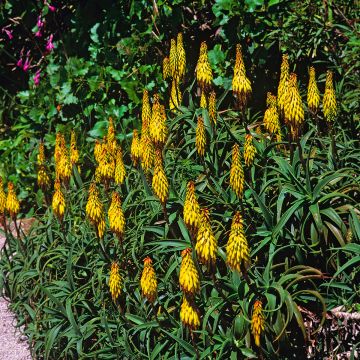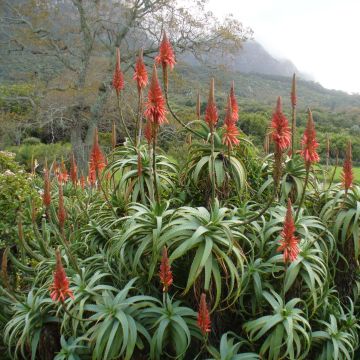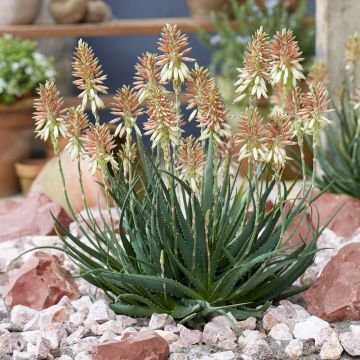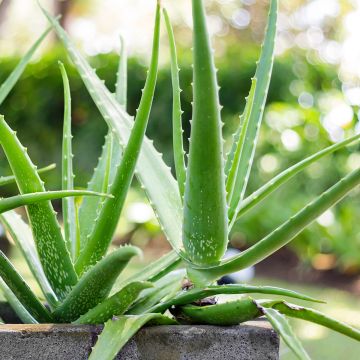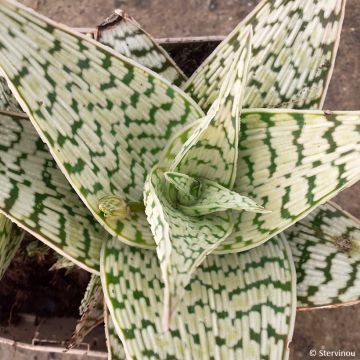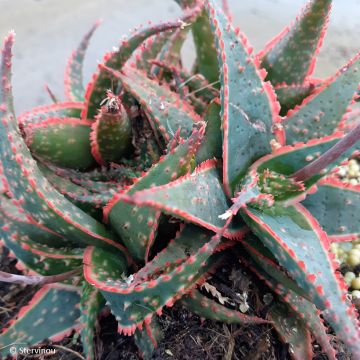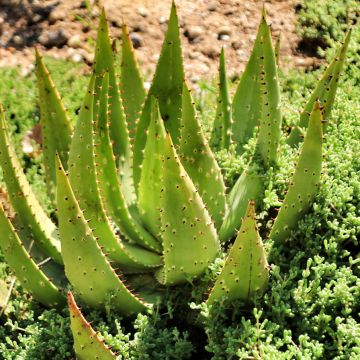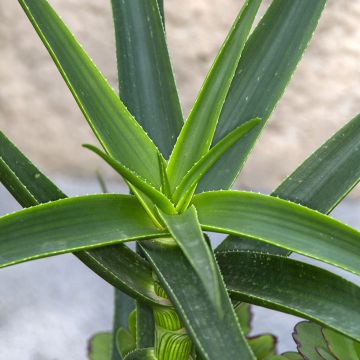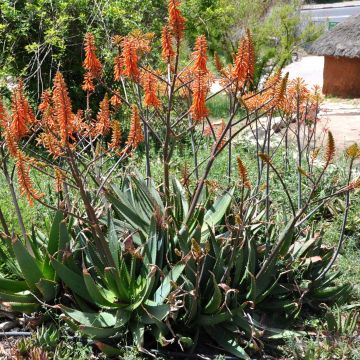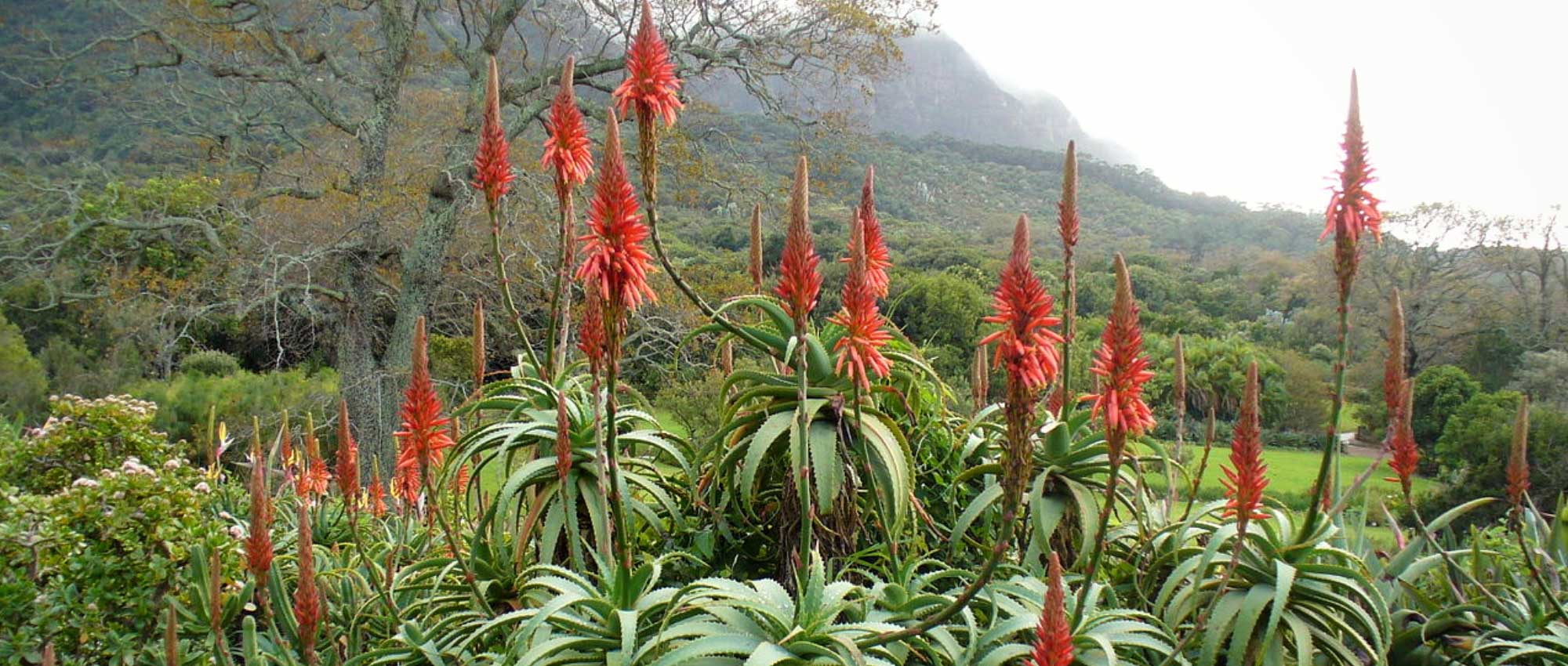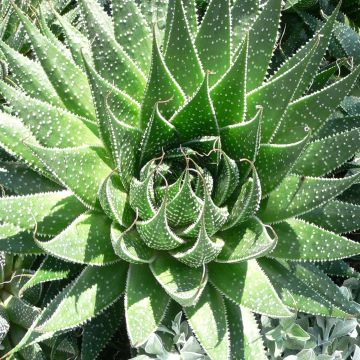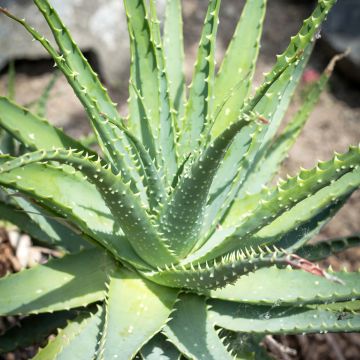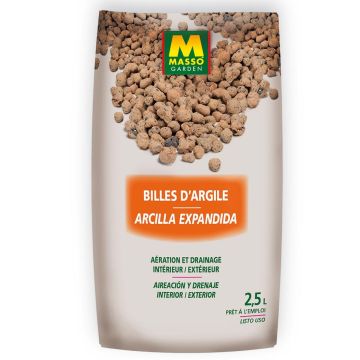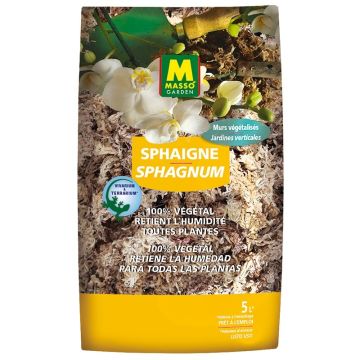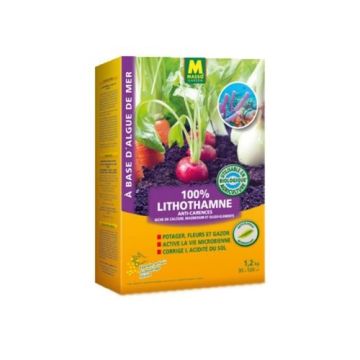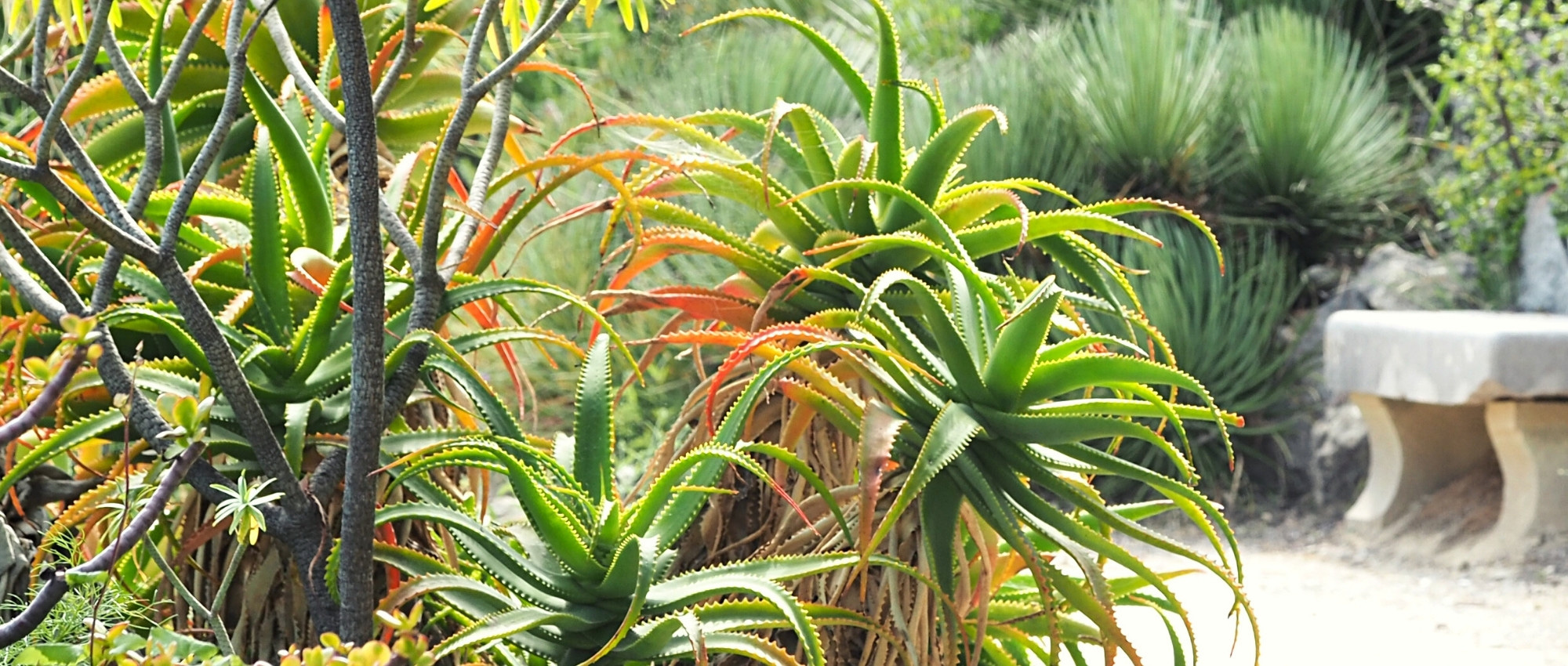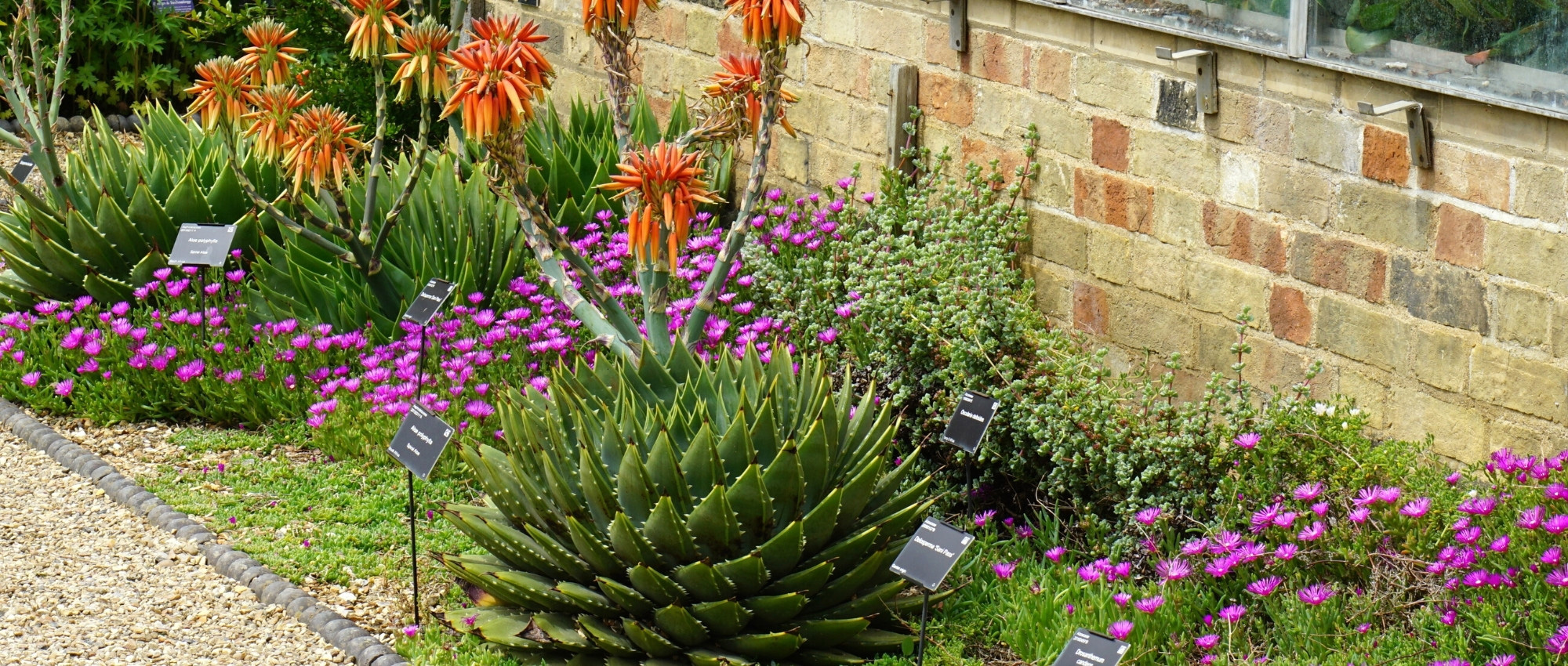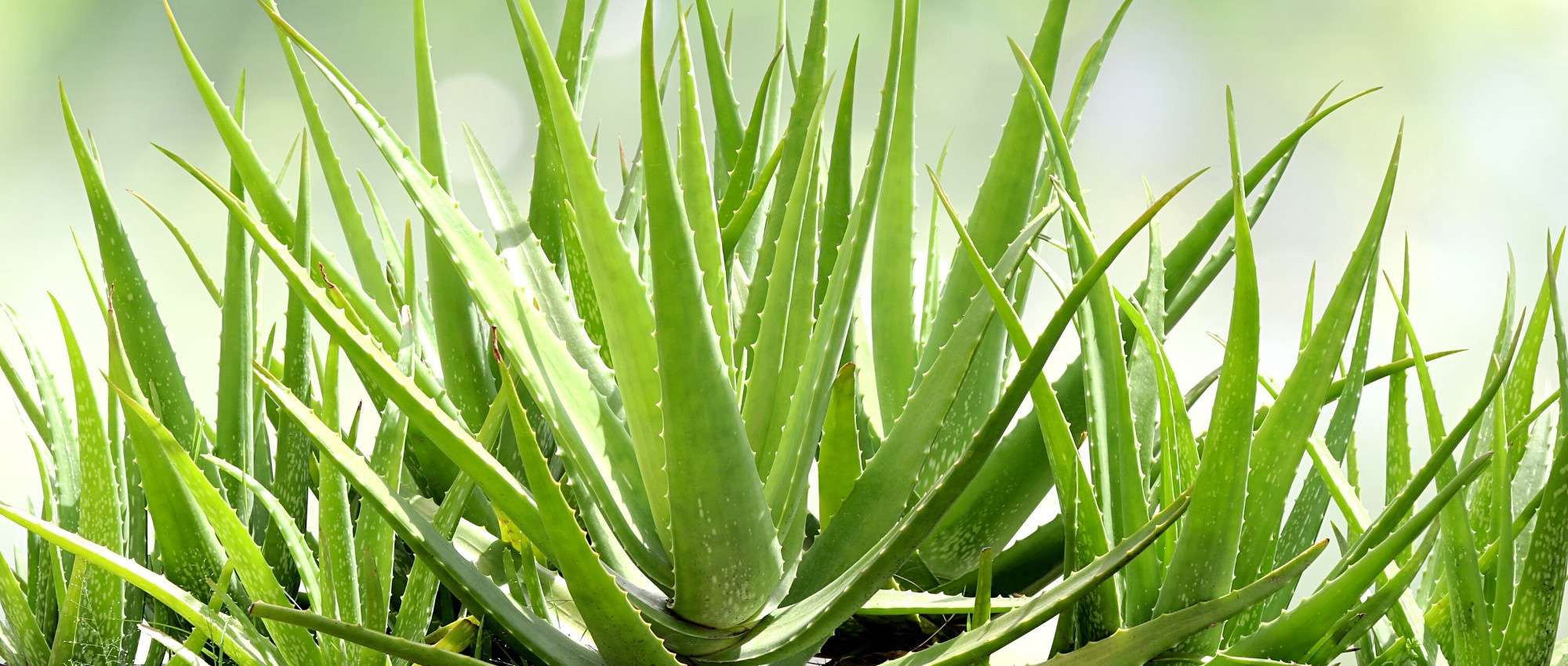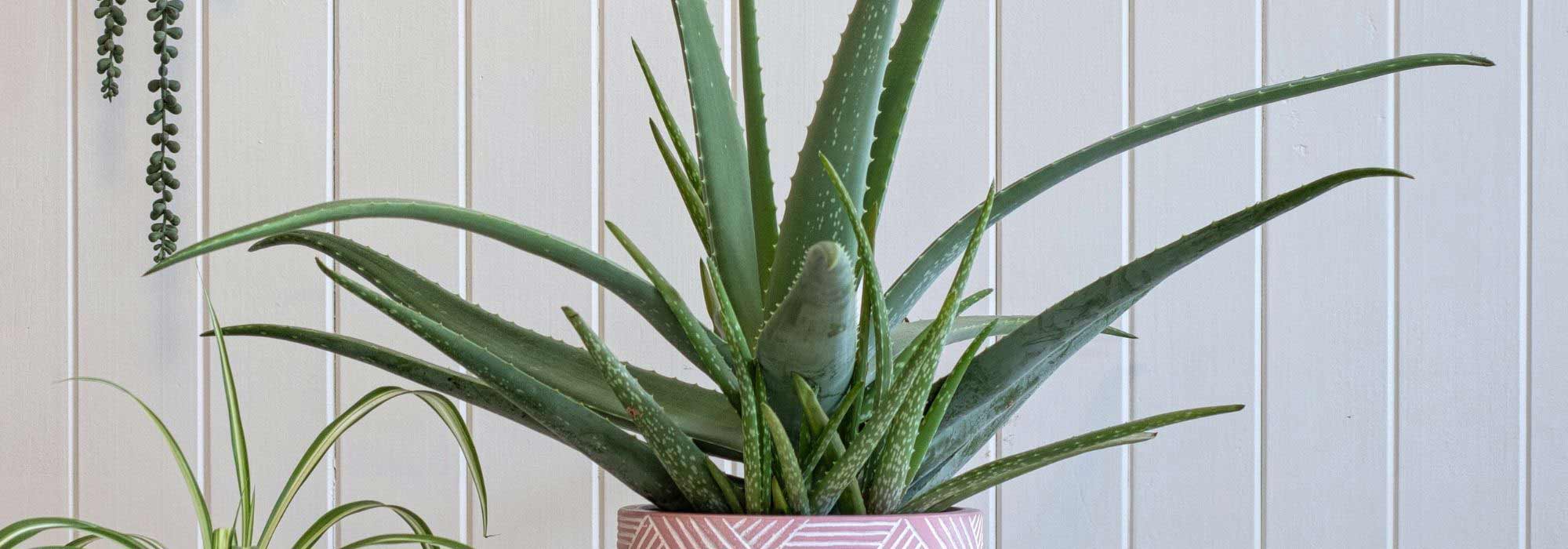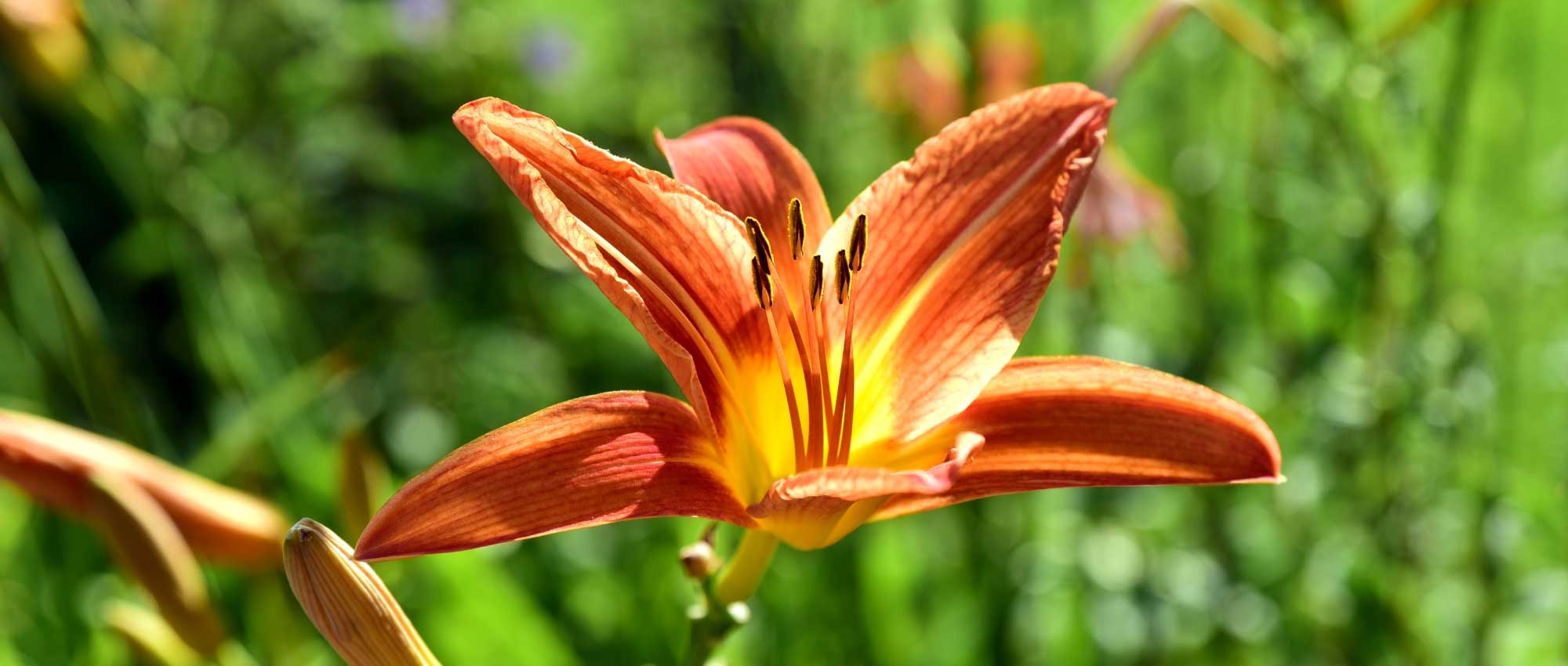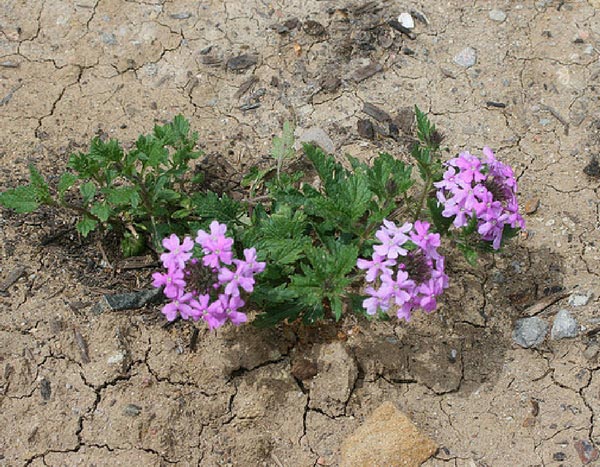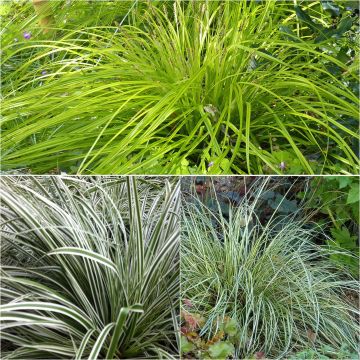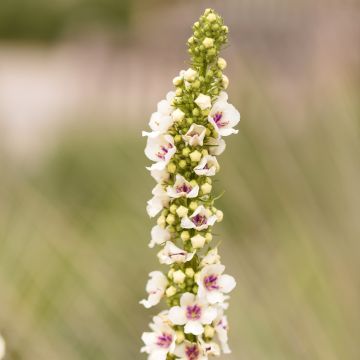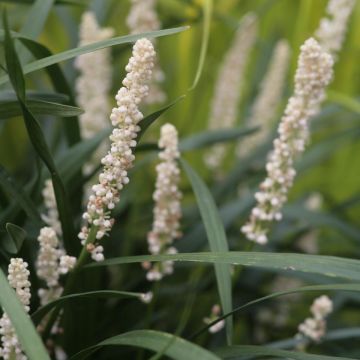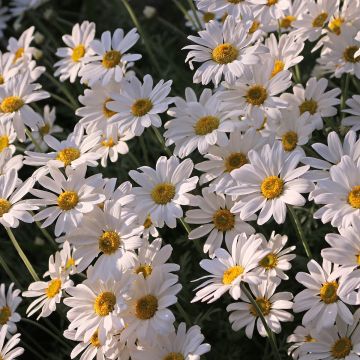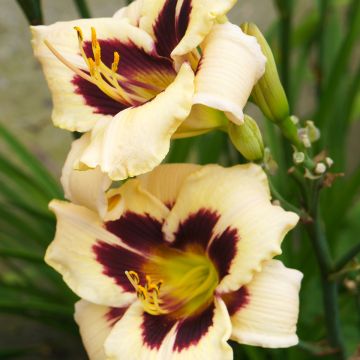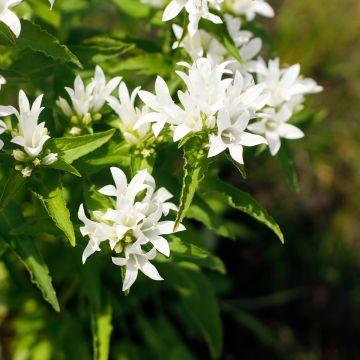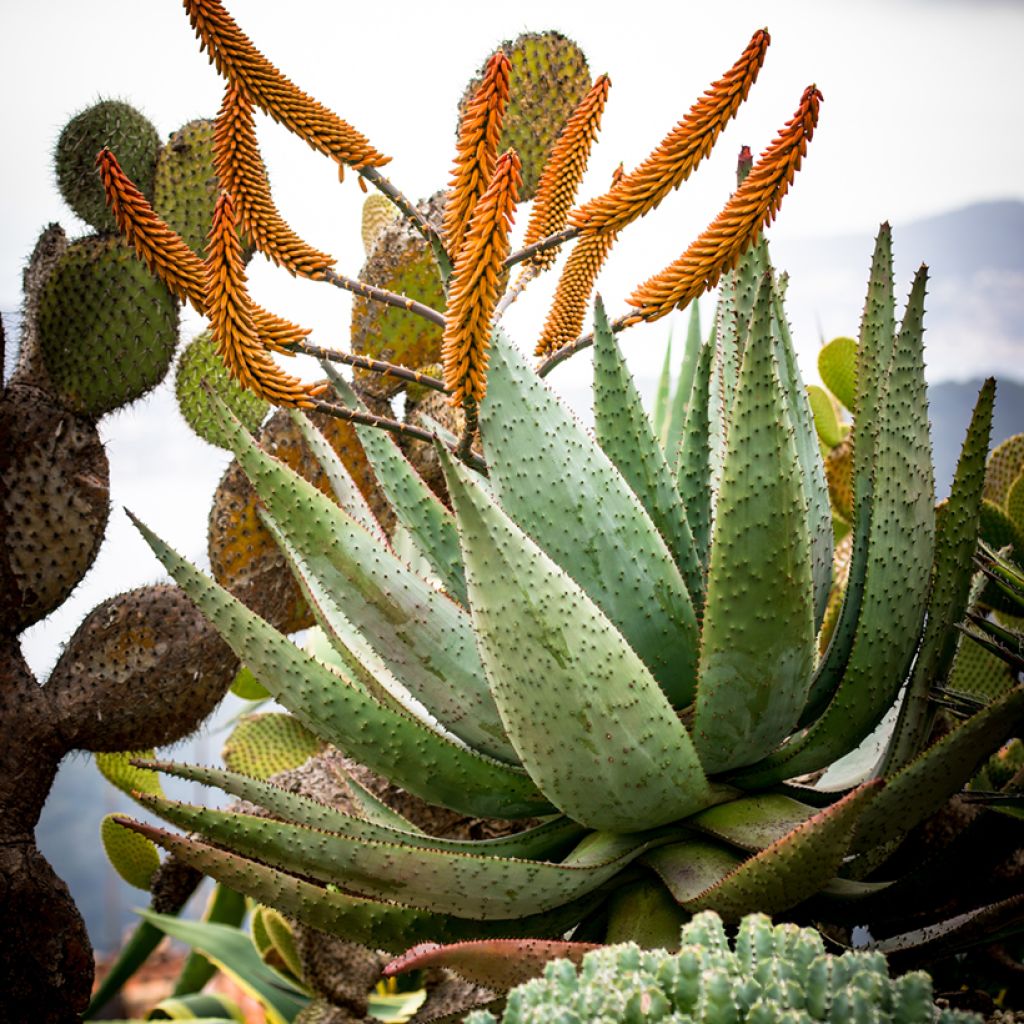

Aloe marlothii - Mountain aloe
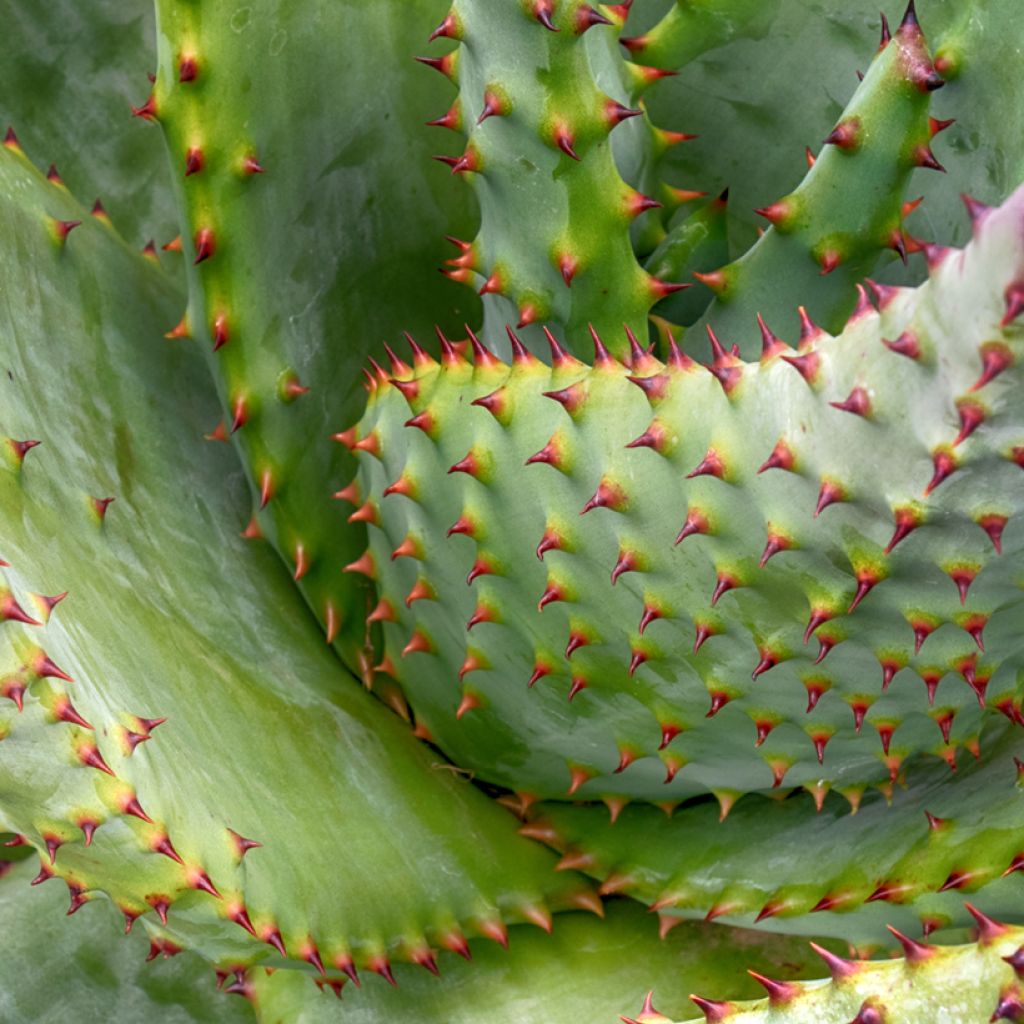

Aloe marlothii - Mountain aloe
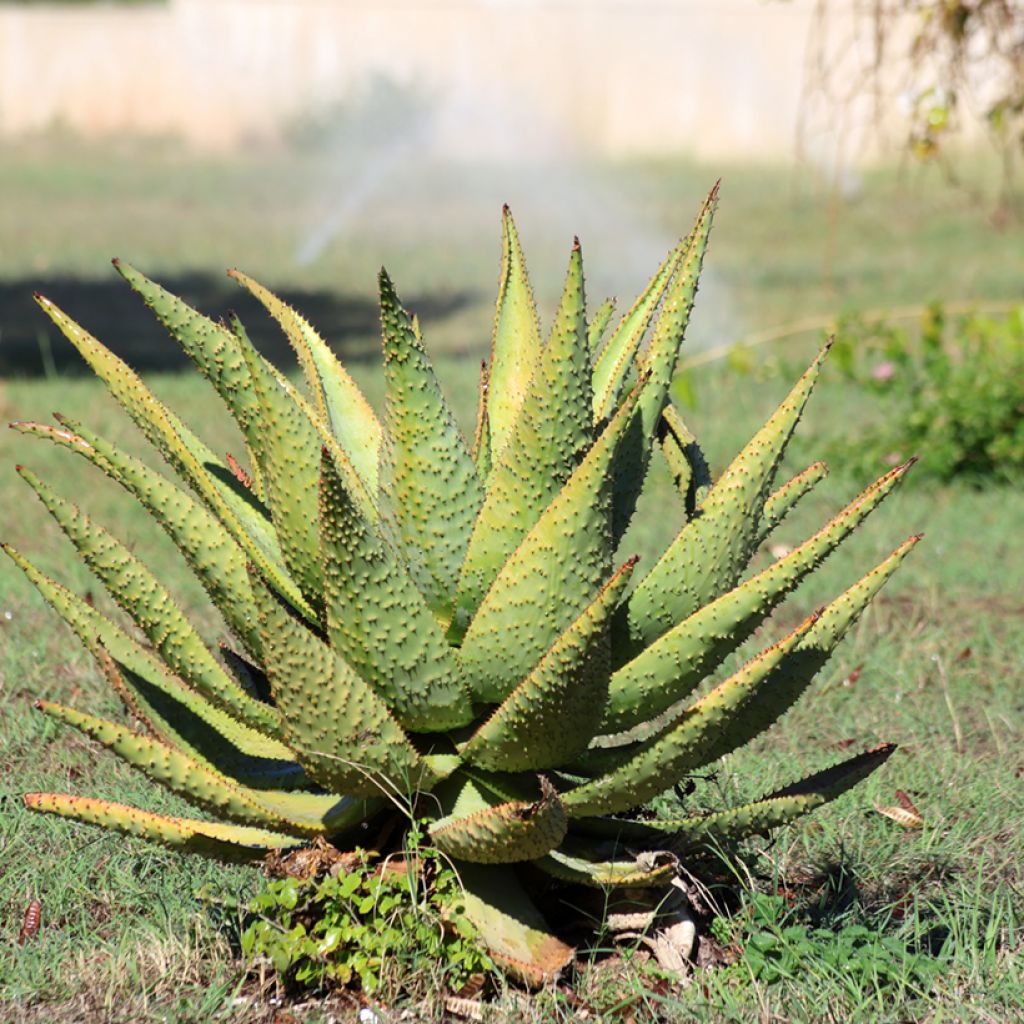

Aloe marlothii - Mountain aloe


Aloe marlothii - Mountain aloe
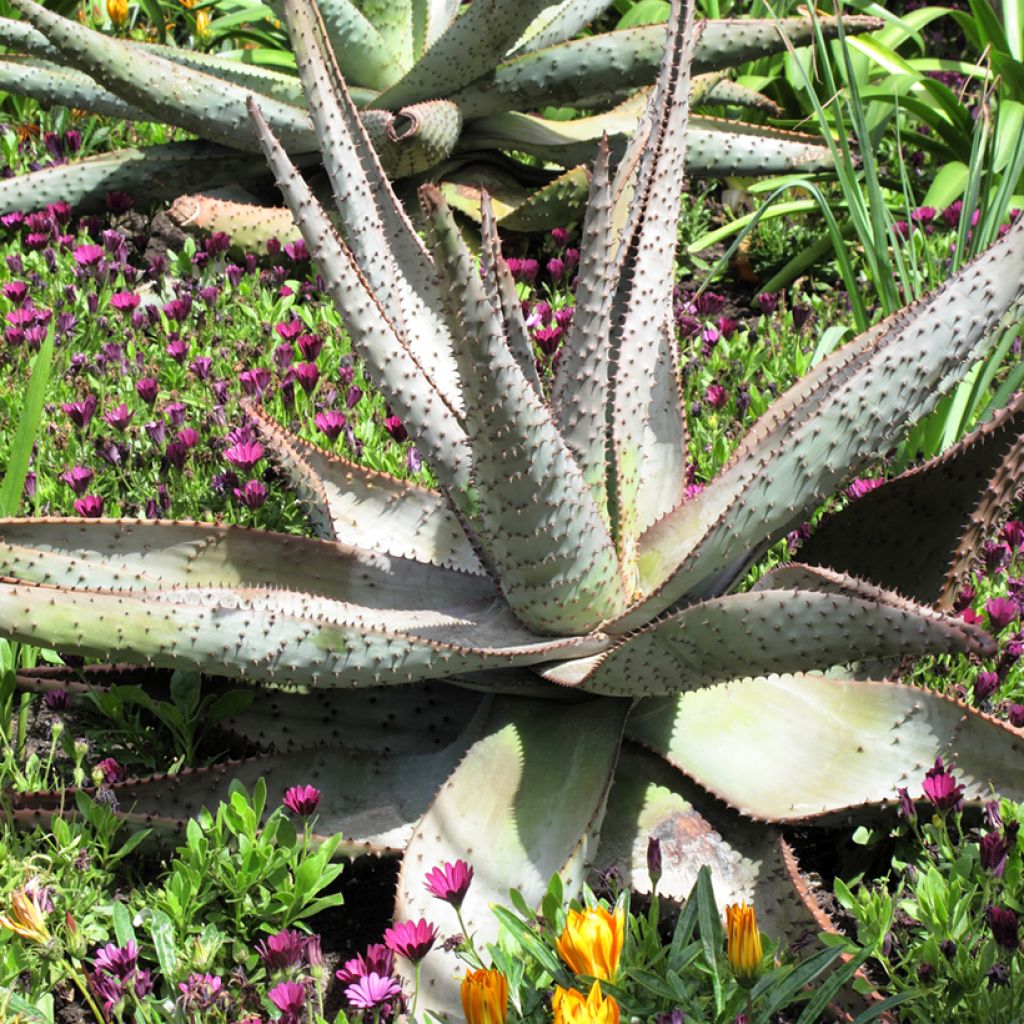

Aloe marlothii - Mountain aloe
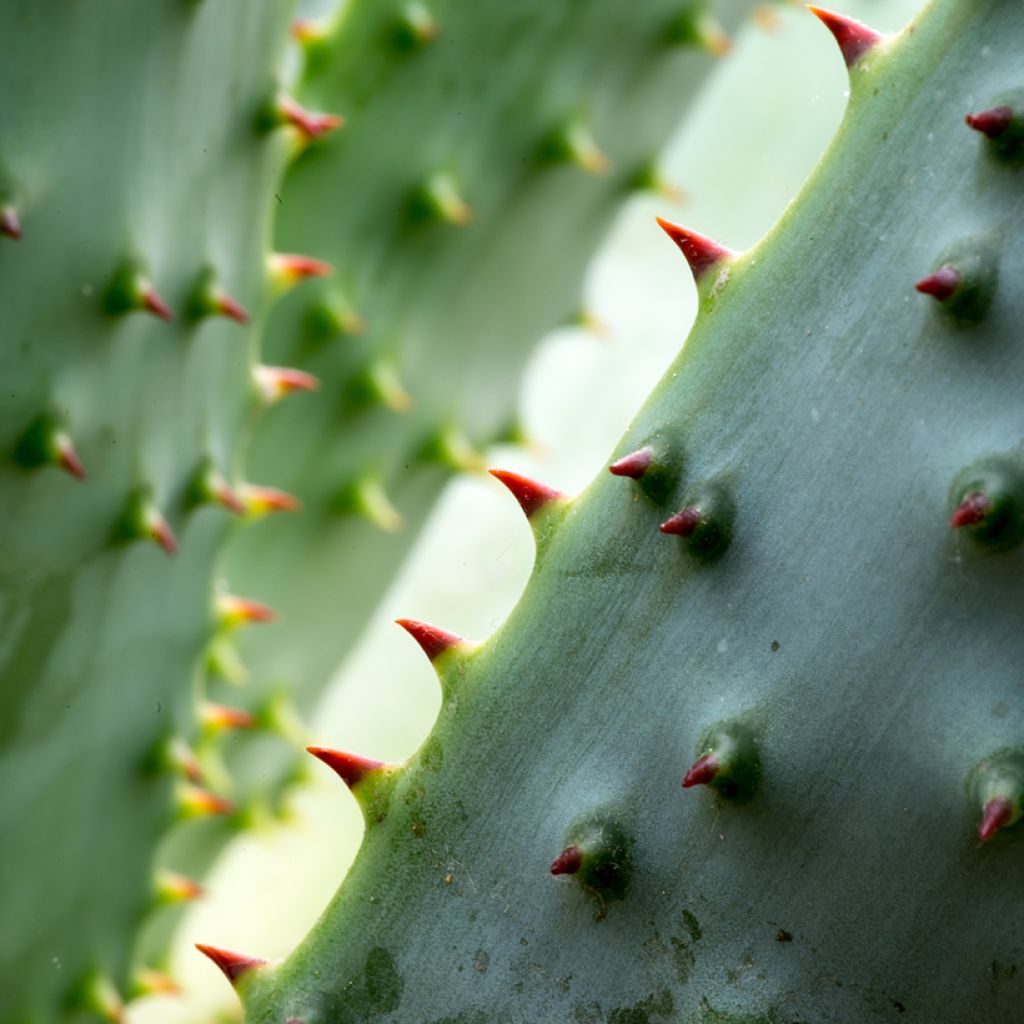

Aloe marlothii - Mountain aloe
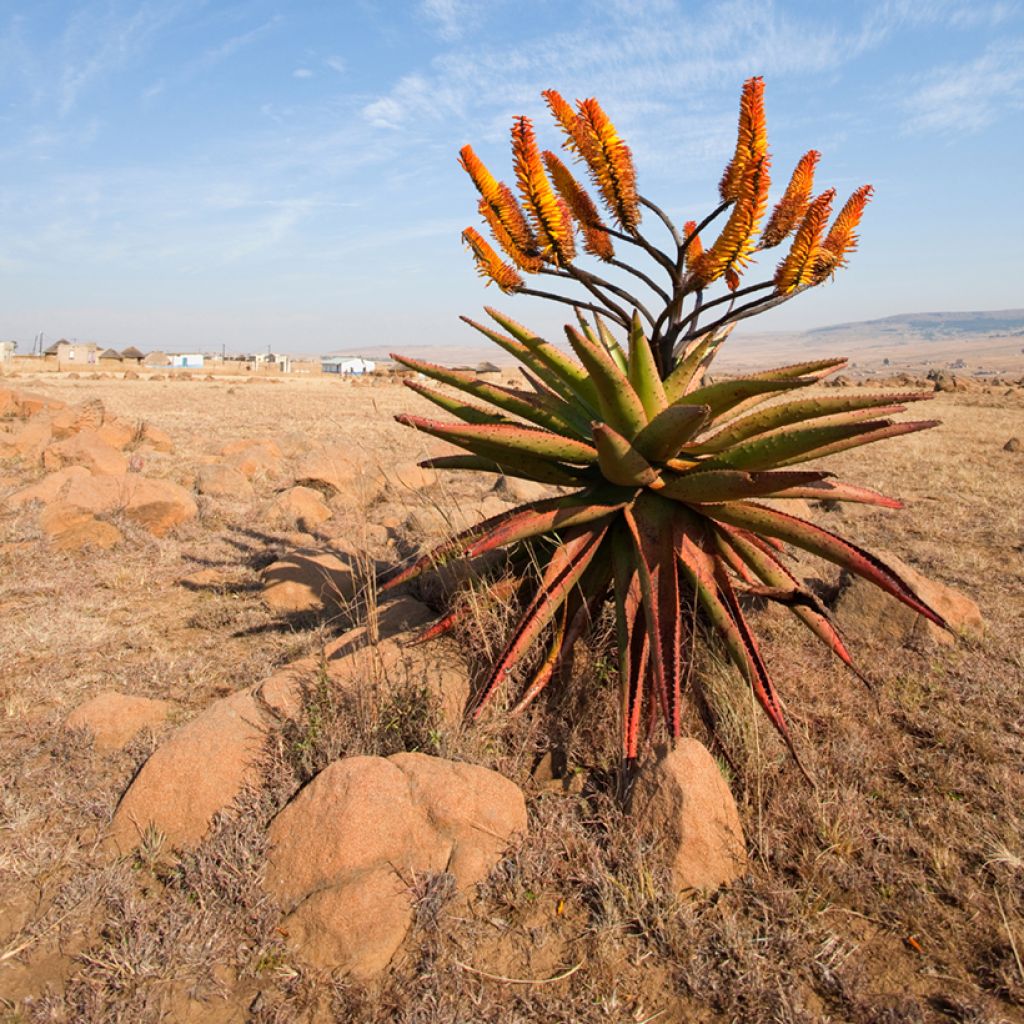

Aloe marlothii - Mountain aloe
Aloe marlothii - Mountain aloe
Aloe marlothii
Mountain aloe
Special offer!
Receive a €20 voucher for any order over €90 (excluding delivery costs, credit notes, and plastic-free options)!
1- Add your favorite plants to your cart.
2- Once you have reached €90, confirm your order (you can even choose the delivery date!).
3- As soon as your order is shipped, you will receive an email containing your voucher code, valid for 3 months (90 days).
Your voucher is unique and can only be used once, for any order with a minimum value of €20, excluding delivery costs.
Can be combined with other current offers, non-divisible and non-refundable.
Why not try an alternative variety in stock?
View all →This plant carries a 12 months recovery warranty
More information
We guarantee the quality of our plants for a full growing cycle, and will replace at our expense any plant that fails to recover under normal climatic and planting conditions.
Would this plant suit my garden?
Set up your Plantfit profile →
Description
Aloe marlothii, or Mountain Aloe, is a tree-like succulent plant adapted to dry climates and mild winters. Its robust trunk bears a dense rosette of thick, grey-green leaves, bristling with brown thorns. In winter, it produces tall, branched inflorescences with tubular flowers ranging from yellow to red. It is drought-resistant and requires very well-draining soil and full sun exposure. Its striking appearance will delight lovers of exotic plants. In regions colder and wetter than the Mediterranean coast, this species can be easily grown in a large pot and overwintered frost-free.
Aloe marlothii belongs to the Asphodelaceae family. This species is native to Mozambique, Botswana, South Africa, and Eswatini, where it colonises rocky terrain and mountain slopes. It is characterised by a tree-like habit with a single stem reaching 2 to 4 metres in height, exceptionally up to 6 metres in the wild. When grown in pots, its growth is restricted due to limited space for the root system. Specimens in 3-litre pots typically measure between 70 and 80 cm tall. The leaves, arranged in a dense rosette at the top of the trunk, are fleshy, grey-green to blue-green and can grow up to 1.5 metres long and 25 cm wide. They are armed with brownish-red thorns along the margins and sporadically on the upper and lower surfaces. The flowering period, occurring mainly from November to March in our climate, features branched, candelabra-like inflorescences with up to 30 horizontal racemes. The tubular flowers, ranging from yellow to bright red, are rich in nectar. In cultivation, Aloe marlothii tolerates drought thanks to water reserves stored in its leaves and trunk. Its stump can withstand temperatures as low as -6°C briefly. Its growth is relatively slow, but once established, the plant requires minimal care. Due to the sharp thorns on the leaves, it is advisable to handle the plant with caution and place it in garden areas where accidental contact is minimal, especially in spaces frequented by children or pets.
Aloe marlothii thrives in large pots on patios or balconies, allowing it to be brought indoors in autumn to protect it from frost. It can be overwintered in a house or conservatory, in any bright and moderately heated space. This plant also flourishes in open ground along the Mediterranean coast or on sheltered Atlantic shores, in a rockery or well-drained slope, in a xerophilic-style bed. Its imposing stature and winter flowering provide vertical structure and notable seasonal interest. It pairs well with Agave americana, for example, whose rigid, bluish leaves contrast with the spiky foliage of the aloe. Senecio mandraliscae, with its creeping habit and grey-blue foliage, creates a groundcover that highlights the aloe’s height.
Traditional uses by local populations: the nectar from the flowers was consumed for its sweet taste, and the plant’s sap was used to treat various skin conditions and parasitic infections. Additionally, the thorny leaves were employed to scrape hides during the preparation of traditional clothing. These uses reflect the cultural and medicinal importance of this species within its natural range.
About Agaves and Aloes:
Aloes and agaves may look similar, but they belong to two different botanical families. The key distinction lies in the fact that aloe rosettes flower for many years, whereas the flowering of a mature agave rosette marks the end of its life. In some Aloe species, interfoliar buds give rise to new plants that cover the dried remains of the parent plant. In agaves, the central flower stalk develops from the terminal bud. In aloes, flower buds emerge between the leaves. Agaves are native to North America, while aloes are found exclusively in the southern half of Africa and nearby Indian Ocean islands.
Aloe marlothii - Mountain aloe in pictures
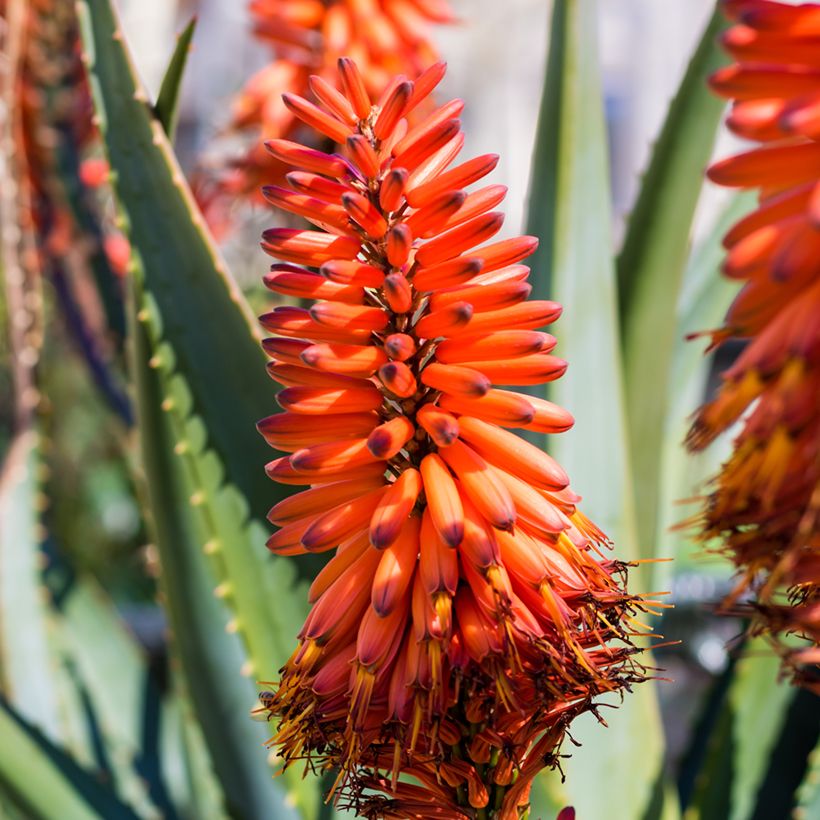

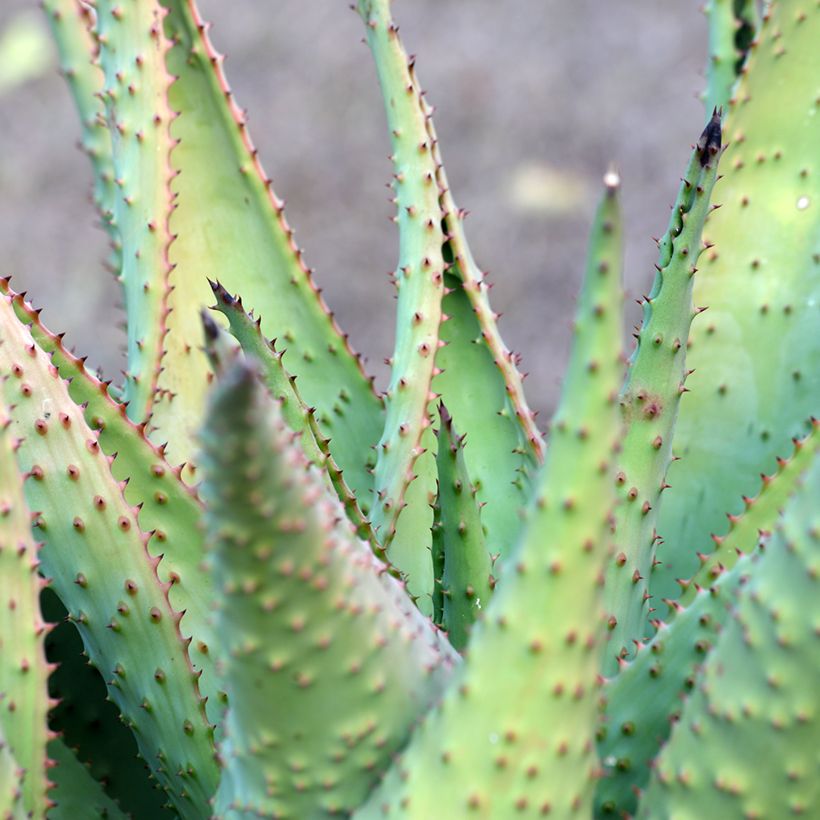



Flowering
Foliage
Plant habit
Botanical data
Aloe
marlothii
Asphodelaceae
Mountain aloe
Aloe spectabilis
South Africa
Other Aloe
View all →Planting and care
Like all succulent plants, aloes thrive in full sun and very well-drained, even poor and dry soil. Aloe marlothii will do well in a gravelly soil, composed of a good portion of coarse sand mixed with garden soil and a bit of well-decomposed leaf mould. A light, non-clayey soil, low in organic matter and highly permeable. It tolerates long, hot, and dry summers well but also thrives in milder, more humid oceanic regions. However, its hardiness in winter largely depends on the dryness of the soil. It can withstand temperatures down to -5/-6°C for short periods in dry soil. When grown in pots, this aloe should be moved to a very bright, minimally or unheated space in winter and watered sparingly.
Planting period
Intended location
Care
Planting & care advice
This item has not been reviewed yet - be the first to leave a review about it.
Similar products
Haven't found what you were looking for?
Hardiness is the lowest winter temperature a plant can endure without suffering serious damage or even dying. However, hardiness is affected by location (a sheltered area, such as a patio), protection (winter cover) and soil type (hardiness is improved by well-drained soil).

Photo Sharing Terms & Conditions
In order to encourage gardeners to interact and share their experiences, Promesse de fleurs offers various media enabling content to be uploaded onto its Site - in particular via the ‘Photo sharing’ module.
The User agrees to refrain from:
- Posting any content that is illegal, prejudicial, insulting, racist, inciteful to hatred, revisionist, contrary to public decency, that infringes on privacy or on the privacy rights of third parties, in particular the publicity rights of persons and goods, intellectual property rights, or the right to privacy.
- Submitting content on behalf of a third party;
- Impersonate the identity of a third party and/or publish any personal information about a third party;
In general, the User undertakes to refrain from any unethical behaviour.
All Content (in particular text, comments, files, images, photos, videos, creative works, etc.), which may be subject to property or intellectual property rights, image or other private rights, shall remain the property of the User, subject to the limited rights granted by the terms of the licence granted by Promesse de fleurs as stated below. Users are at liberty to publish or not to publish such Content on the Site, notably via the ‘Photo Sharing’ facility, and accept that this Content shall be made public and freely accessible, notably on the Internet.
Users further acknowledge, undertake to have ,and guarantee that they hold all necessary rights and permissions to publish such material on the Site, in particular with regard to the legislation in force pertaining to any privacy, property, intellectual property, image, or contractual rights, or rights of any other nature. By publishing such Content on the Site, Users acknowledge accepting full liability as publishers of the Content within the meaning of the law, and grant Promesse de fleurs, free of charge, an inclusive, worldwide licence for the said Content for the entire duration of its publication, including all reproduction, representation, up/downloading, displaying, performing, transmission, and storage rights.
Users also grant permission for their name to be linked to the Content and accept that this link may not always be made available.
By engaging in posting material, Users consent to their Content becoming automatically accessible on the Internet, in particular on other sites and/or blogs and/or web pages of the Promesse de fleurs site, including in particular social pages and the Promesse de fleurs catalogue.
Users may secure the removal of entrusted content free of charge by issuing a simple request via our contact form.
The flowering period indicated on our website applies to countries and regions located in USDA zone 8 (France, the United Kingdom, Ireland, the Netherlands, etc.)
It will vary according to where you live:
- In zones 9 to 10 (Italy, Spain, Greece, etc.), flowering will occur about 2 to 4 weeks earlier.
- In zones 6 to 7 (Germany, Poland, Slovenia, and lower mountainous regions), flowering will be delayed by 2 to 3 weeks.
- In zone 5 (Central Europe, Scandinavia), blooming will be delayed by 3 to 5 weeks.
In temperate climates, pruning of spring-flowering shrubs (forsythia, spireas, etc.) should be done just after flowering.
Pruning of summer-flowering shrubs (Indian Lilac, Perovskia, etc.) can be done in winter or spring.
In cold regions as well as with frost-sensitive plants, avoid pruning too early when severe frosts may still occur.
The planting period indicated on our website applies to countries and regions located in USDA zone 8 (France, United Kingdom, Ireland, Netherlands).
It will vary according to where you live:
- In Mediterranean zones (Marseille, Madrid, Milan, etc.), autumn and winter are the best planting periods.
- In continental zones (Strasbourg, Munich, Vienna, etc.), delay planting by 2 to 3 weeks in spring and bring it forward by 2 to 4 weeks in autumn.
- In mountainous regions (the Alps, Pyrenees, Carpathians, etc.), it is best to plant in late spring (May-June) or late summer (August-September).
The harvesting period indicated on our website applies to countries and regions in USDA zone 8 (France, England, Ireland, the Netherlands).
In colder areas (Scandinavia, Poland, Austria...) fruit and vegetable harvests are likely to be delayed by 3-4 weeks.
In warmer areas (Italy, Spain, Greece, etc.), harvesting will probably take place earlier, depending on weather conditions.
The sowing periods indicated on our website apply to countries and regions within USDA Zone 8 (France, UK, Ireland, Netherlands).
In colder areas (Scandinavia, Poland, Austria...), delay any outdoor sowing by 3-4 weeks, or sow under glass.
In warmer climes (Italy, Spain, Greece, etc.), bring outdoor sowing forward by a few weeks.






























